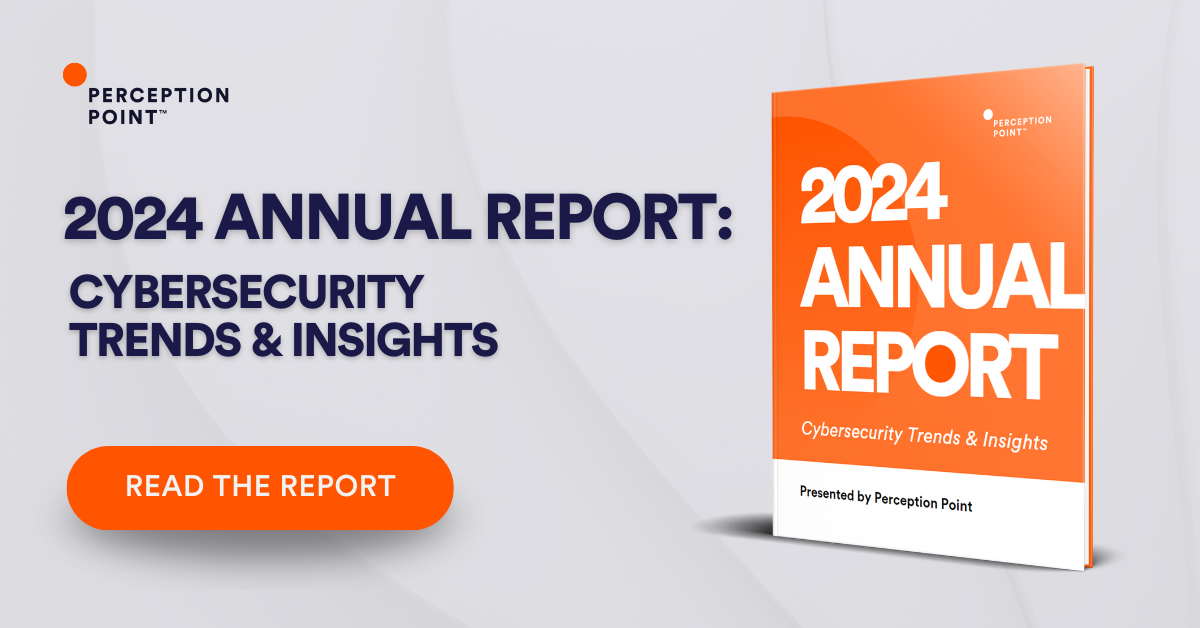What is an Endpoint Protection Platform (EPP)?
Organizations operating a large number of endpoints, such as employee workstations, workstations, and mobile devices, must establish an endpoint security strategy. Typically, a key part of this strategy is the use of endpoint protection platforms (EPP), solutions that protect endpoints against malware and other malicious activity. EPPs also offer investigation and remediation abilities that are required to rapidly respond to security incidents.
Endpoint protection platforms provide multiple detection tools that range from the standard indication of compromise (IOC) solutions to more advanced behavioral analysis techniques based on machine learning. Modern solutions are cloud-based, covering endpoints both on the corporate network and outside the corporate perimeter.
EPPs typically provide cloud-based threat data, meaning that endpoint agents do not need to maintain local IoC databases. Instead, they refer back to a constantly-updated cloud resource to obtain context on security events.
In this article
Why is Endpoint Protection Important?
Most endpoint protection platforms employ one or more layers of defense. Defense in depth is a concept that now guides most organizational IT security mechanisms. It establishes multiple layers of defense, so that even if attackers succeed in breaching one or more layers of security, additional layers exist, deeper within the perimeter, to mitigate the threat.
Automated detection uses patterns and correlation engines, and in modern platforms, machine learning-based behavioral analysis. If the detection layer does not detect a risk, a second layer within the EPP uses custom prevention policies, such as whitelists and blacklists, to avoid execution of malicious software, or software containing vulnerabilities.
In this way, EPP can hinder basic endpoint threats independently, leaving security analysts free to hunt down advanced threats using endpoint detection and response (EDR) technology, which is commonly bundled as part of EPP solutions.
Learn more in our detailed guide to Endpoint Detection and Response.

Tal ZamirCTO, Perception Point
Tal Zamir is a 20-year software industry leader with a track record of solving urgent business challenges by reimagining how technology works.
TIPS FROM THE EXPERTS
- Incorporate AI-driven threat hunting Enhance your EPP with AI-driven threat hunting capabilities. These systems continuously analyze endpoint activity to detect subtle anomalies that could indicate a previously unknown or advanced persistent threat (APT), allowing proactive response before significant damage occurs.
- Develop a rapid incident response playbook Complement your EPP with a detailed, pre-defined incident response playbook specifically tailored to endpoint attacks. This should include steps for isolation, forensics, and recovery, enabling a swift and effective response to minimize the impact of a breach.
- Integrate with user and entity behavior analytics (UEBA) Enhance endpoint security by integrating your EPP with UEBA solutions. This allows you to monitor and analyze user behaviors, identifying insider threats or compromised accounts based on deviations from normal activity patterns.
- Conduct regular adversarial simulations Periodically perform adversarial attack simulations against your endpoints using red team or automated breach and attack simulation (BAS) tools. These exercises will test the resilience of your EPP and help identify potential weaknesses before they can be exploited by real attackers.
How Do EPP Solutions Work?
One of the biggest threats to endpoints is malware. Malware can come from many sources, but most often, it infects a machine when a user clicks a link or opens a malicious email attachment. Once in the environment, malware tries to infect as much data and processes as possible.
A main goal of endpoint protection platforms (EPP) is to protect endpoints by preventing malware from entering the environment. Just as firewalls prevent unauthorized network access, EPP solutions can block malware and other known threats on endpoints.
Antimalware protection has evolved beyond legacy antivirus. Modern malware is evasive and often cannot be detected by traditional, signature based approaches. For this reason, modern EPP utilizes a combination of advanced anti-malware features, including:
- Behavioral analysis—machine learning capabilities allow endpoint protection platforms to analyze large amounts of data, to determine whether files have the potential to be malicious, or exhibit unusual behavior, even if not detected as malware.
- Threat intelligence—by integrating with cloud-based threat intelligence databases, EPPs can automatically block known malicious elements with up-to-date data on billions of threats, threat actors and traffic sources.
- Sandbox—allows endpoint protection platforms to quarantine suspicious files in a secure environment. In this environment, the endpoint protection platform can safely detonate a file and monitor its characteristics, without risking damage to other parts of the system.
How to Choose an Endpoint Protection Platform
Here are a few key features you should evaluate when selecting an EPP solution.
Multiple Threat Detection and Remediation Approaches
An EPP platform should include several integrated detection and remediation solutions. These should cover:
- Anti-malware signature scanning
- Web-browser security
- Threat vector blocking for fileless malware blocking
- Credential theft monitoring
- Rollback remediation.
Platforms are increasingly employing endpoint detection and response (EDR) and data loss prevention (DLP) for both threat detection and remediation. Whereas EDR effectively monitors endpoint events, collating the data for future analysis, DLP prevents leaking sensitive data from the organization’s servers.
Real-Time Threat Data
EPPs should provide a comprehensive, constantly updated database of threats and threat actors. This data can be used directly to prevent attacks (as in malware and attack patterns), or can be correlated with other data to detect and block sophisticated attacks. Prefer a vendor that has an independent security research team, but also pulls data from other sources to increase coverage.
Integration Framework
Endpoint protection needs to integrate with other parts of the security stack. Third-party products may provide intrusion prevention, DLP, EDR, and other capabilities. The EPP solution also needs to be able to integrate with systems that provide data about endpoints outside the corporate network—for example, mobile device management (MDM) and cloud monitoring systems.
Centralized Management
An EPP solution should provide a single pane of glass providing visibility into all endpoints and related security tools. There should be one interface enabling configuration, alert management, visibility into security incidents, and endpoint protection metrics across the enterprise, such as number of security events detected and prevented.
EPP vs EDR Solutions
Endpoint detection and response (EDR) provides an additional line of defense after EPP preventative measures. EDR assumes a breach is underway. It conducts behavior-based detection and gives security analysts the tools to respond to a security incident on endpoints.
A few key differences between the two types of solutions:
- EPP presents a more passive approach, while EDR is proactive
- EPP operates without supervision, while EDR must be operated by expert security staff
- EPP focuses on each endpoint in isolation, while EDR, aggregates data from across the entire enterprise, detecting threats that affect multiple endpoints
Ideally, organizations should employ EDR and EPP together. While EPP provides comprehensive protection for a wide range of threats, when breaches do happen, the tools provided by EDR are essential for detecting and mitigating the threat in time.
Learn more in our detailed guide to EDR vs EPP.
Enhancing Endpoint Security with Perception Point
Perception Point provides enterprise-grade security to protect email, browsers, cloud collaboration platforms and proprietary apps from all types of cyberattacks.
An all-included managed Incident Response service is available for all customers 24/7. Perception Point’s team of cybersecurity experts will manage incidents, provide analysis and reporting, and optimize detection on-the-fly. The service drastically minimizes the need for internal IT or SOC team resources, reducing the time required to react and mitigate web-borne attacks by up to 75%.
Customers deploying the solution will experience fewer breaches, while providing their users with a better experience as they have the freedom to browse the web, use SaaS applications that they require, and access privileged corporate data, confidently, securely, and without added latency.
Contact us for a demo of our Advanced Threat Prevention solutions, today.

Endpoint protection platforms (EPPs) protect endpoints against malware and other malicious activity. EPPs also offer investigation and remediation abilities that are required to rapidly respond to security incidents.
Most endpoint protection platforms employ one or more layers of defense. Defense in depth is a concept that now guides most organizational IT security mechanisms. It establishes multiple layers of defense, so that even if attackers succeed in breaching one or more layers of security, additional layers exist, deeper within the perimeter, to mitigate the threat.
Modern EPP utilizes a combination of advanced anti-malware features, including:
– Behavioral analysis—machine learning capabilities allow endpoint protection platforms to analyze large amounts of data, to determine whether files have the potential to be malicious, or exhibit unusual behavior, even if not detected as malware.
– Threat intelligence—by integrating with cloud-based threat intelligence databases, EPPs can automatically block known malicious elements with up-to-date data on billions of threats, threat actors and traffic sources.
– Sandbox—allows endpoint protection platforms to quarantine suspicious files in a secure environment. In this environment, the endpoint protection platform can safely detonate a file and monitor its characteristics, without risking damage to other parts of the system.
Here are a few key features you should evaluate when selecting an EPP solution.
– Multiple Threat Detection and Remediation Approaches
– Real-Time Threat Data
– Integration Framework
– Centralized Management
Endpoint detection and response (EDR) provides an additional line of defense after EPP preventative measures. EDR assumes a breach is underway. It conducts behavior-based detection and gives security analysts the tools to respond to a security incident on endpoints. A few key differences between the two types of solutions:
– EPP presents a more passive approach, while EDR is proactive
– EPP operates without supervision, while EDR must be operated by expert security staff
– EPP focuses on each endpoint in isolation, while EDR, aggregates data from across the entire enterprise, detecting threats that affect multiple endpoints
























